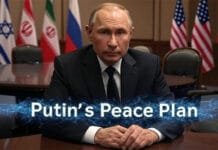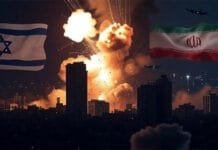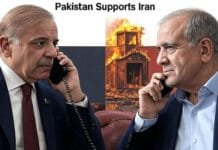INVC NEWS
Middle East – : The nuclear agreement once seen as a pillar of global diplomacy has unraveled. Nearly a decade after it was signed, the Iran nuclear deal is no longer functioning, with renewed hostilities between Iran and Israel bringing it back into international focus.
What Was the Iran Nuclear Deal?
The Joint Comprehensive Plan of Action (JCPOA) was signed on July 14, 2015, after two years of negotiations. It brought together Iran and the five permanent members of the UN Security Council—the United States, China, Russia, France, and the United Kingdom—plus Germany and the European Union.
The agreement restricted Iran’s nuclear enrichment program in exchange for the lifting of sanctions tied to nuclear activities. Iran committed to reducing its uranium stockpile, removing two-thirds of its centrifuges, and opening its nuclear facilities to international inspections by the International Atomic Energy Agency (IAEA).
The goal was to prevent Iran from building a nuclear weapon while allowing it to maintain a peaceful nuclear energy program. The deal took effect on January 16, 2016, after the IAEA verified Iran had met key obligations, including shipping out 25,000 pounds of enriched uranium and deactivating major parts of its nuclear infrastructure.
What Did Iran Get in Return?
After verification, the United States and European nations lifted oil and financial sanctions. Around $100 billion in frozen Iranian assets were released. The deal included “snapback” provisions, which meant sanctions would return if Iran violated the agreement.
Under the JCPOA, Iran’s nuclear activities were to remain peaceful for over a decade, but many of the deal’s terms came with expiration dates. After ten years, limits on centrifuges would be lifted; after fifteen years, caps on enriched uranium would end.
Why Was the Deal Controversial?
Critics pointed to these sunset provisions, arguing that Iran would be free to resume nuclear weapons development once the timelines expired. They also warned that sanctions relief could fuel Iran’s regional activities, including support for militant groups and proxy wars.
Israel strongly opposed the deal. Prime Minister Benjamin Netanyahu called it a “historic mistake,” warning that the agreement enabled Iran to strengthen its position while delaying—not stopping—its path to a bomb.
Why Did the U.S. Withdraw?
On May 8, 2018, President Donald Trump officially pulled the United States out of the deal. He described the JCPOA as “rotten” and argued that it did not prevent Iran from building a nuclear bomb, only postponed it.
Trump had campaigned on tearing up the agreement and followed through by reimposing crippling economic sanctions on Iran, targeting its oil exports, banking sector, and industrial economy.
“It is clear to me that we cannot prevent an Iranian nuclear bomb under the decaying and rotten structure of the current agreement,” Trump said while announcing the withdrawal.
What’s the Status Today?
Following the U.S. exit, Iran gradually scaled back its compliance, enriching uranium beyond permitted levels and limiting IAEA access. The Council on Foreign Relations now considers the deal “essentially defunct.” No new agreement has replaced it, despite diplomatic efforts under the Biden administration.
Recent Israeli airstrikes on Iranian targets have further raised tensions. The conflict is now centered on Iran’s nuclear ambitions, with nuclear scientists and military leaders reportedly killed, and Iran responding with threats and missile activity.
The collapse of the Iran nuclear deal continues to shape the balance of power and risk across the Middle East, with diplomacy at a standstill and military actions escalating.
















